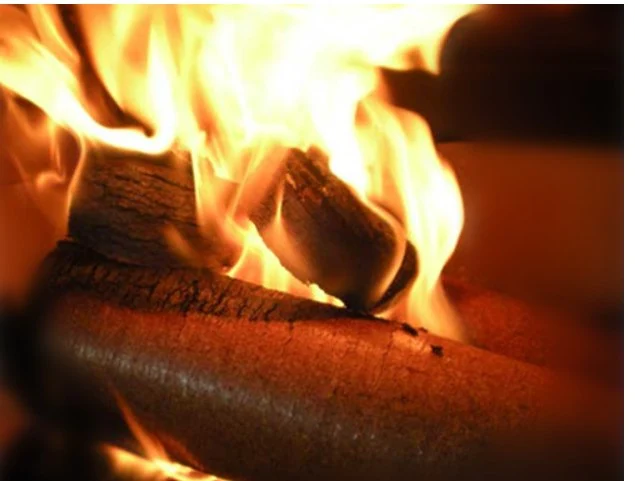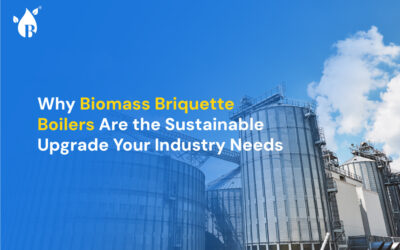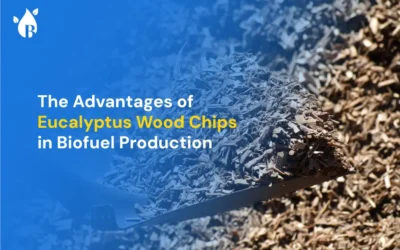
In What Context?
Owing to economic development and population rise, the commercial primary energy consumption in India has skyrocketed by about 700% in the last four decades . Certainly, the hunger for energy is still on rise at an unprecedented rate.
Given these circumstances, the transition urgency towards coal-alternatives is highly a priority at the moment. Biomass briquettes have emerged as a viable and effective alternative to coal. However, some doubts may arise: Is their feasibility proven? Can briquettes offer comparable burning efficiency to coal? And if so, will our machinery be compatible?
This blog will address these concerns and will give you an broad overview of energy biomass briquettes, with particular focus on its optimization, efficiency, and technical feasibility.
Significance of Proper Briquette Size and Shape
The size and shape of biomass briquettes play a crucial role in ensuring optimal combustion. The combustion process involves the conversion of solid fuel into heat energy through the chemical reaction with oxygen. Now, we’ll look at why size and shape is essential.
- Airflow and Oxygen Supply: Proper airflow is important for efficient combustion as it enables oxygen to reach the fuel and facilitate the burning process. If the briquettes are too large or irregularly shaped, they can hinder airflow, leading to incomplete combustion and reduced efficiency.
- Surface Area-to-Volume Ratio: Smaller briquette sizes tend to have a larger surface area relative to their volume. This increased surface area promotes better contact between the briquette and oxygen, facilitating faster and more efficient combustion. It allows for a greater amount of fuel to be exposed to the flame, resulting in improved heat release and energy generation.
- Combustion Rate and Control: Smaller briquettes tend to ignite and burn more quickly, providing a faster response when heat is needed. Still, uniform size and shape ensure consistent burning, enabling better control over the combustion process, temperature, and heat output.
- Ash Formation and Management: If the briquettes are too large or have irregular shapes, they may result in incomplete combustion, leading to higher ash content and increased ash residue.
- Handling and Feed Systems: The size and shape of briquettes should also be compatible with the handling and feed systems of the combustion equipment. Machinery and systems designed for specific briquette sizes and shapes can ensure smooth feeding, efficient combustion, and optimal performance.
Moisture Content and Combustion Efficiency
The moisture content in briquettes plays a significant role in their combustion efficiency. The presence of moisture affects the ignition, burning rate, and heat output of the briquettes.
High moisture content in briquettes leads to delayed ignition and reduced heat output, as a significant amount of energy is wasted on evaporating the moisture. It also hampers combustion, resulting in incomplete burning and the release of higher levels of pollutants.
On the other hand, properly dried briquettes with optimal moisture levels ignite easily, burn efficiently, and maximize heat release, resulting in improved combustion efficiency and reduced emissions.
Controlling and maintaining the moisture content within the desired range is crucial to achieve optimal performance and maximize the energy potential of biomass briquettes.
Technical Feasibility of Biomass Briquettes
The technical feasibility of biomass briquettes revolves around their compatibility with existing machinery, systems, and infrastructure. Biomass briquettes need to possess combustion properties that are comparable to or better than traditional fuels like coal. They should burn efficiently and provide consistent heat output without causing significant technical issues, such as clogging or excessive ash formation, in combustion systems.
Assuringly, today’s biomass briquettes are technically feasible and widely used as a sustainable alternative to traditional fuels. Over the years, significant advancements have been made in biomass briquette production techniques, resulting in high-quality briquettes that meet technical requirements.
Modern biomass briquettes are engineered to have optimal combustion properties, including consistent heat release, low ash content, and minimal emissions. Manufacturers ensure that biomass briquettes are produced with suitable binders, appropriate moisture content, and compacted to the right density for efficient burning.
Additionally, biomass briquettes have been successfully integrated into various combustion systems, including industrial boilers, stoves, and power plants, without major technical challenges. The extensive adoption and use of biomass briquettes across industries demonstrate their technical feasibility and effectiveness as a renewable energy source.
Biomass Briquettes sale in IndiaConclusive Insights
Optimizing biomass briquette combustion is paramount for achieving improved efficiency and maximizing the benefits of this renewable energy source. By implementing advanced techniques and strategies, we can unlock the full potential of biomass briquettes, enhancing their combustion efficiency and reducing environmental impact. From proper moisture control to optimizing briquette size and shape, each aspect plays a crucial role in achieving optimal performance. By embracing these techniques, we can pave the way towards a greener and more sustainable future, where biomass briquettes take center stage as a highly efficient and eco-friendly fuel option.
To know more information, contact Biomass Briquette Sale in India.
Let us ignite the path of biomass briquettes together.



